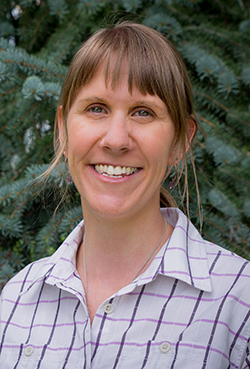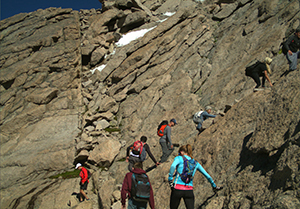
A new research brief from the University of Wyoming's Haub School of Environment and Natural Resources shows how to estimate visitor use at remote high-elevation sites.
The paper, titled "Modeling visitor use on high elevation mountain trails: An example from Longs Peak in Rocky Mountain National Park," was recently published in the Journal of Mountain Science. Abigail Sisneros-Kidd, UW Haub School assistant professor of outdoor recreation and tourism management, was a co-author of the paper, along with authors from the National Park Service, Oregon State University and Utah State University.
Park and protected area managers need reliable estimates of visitor use in alpine areas and mountain summits so they can understand impacts to ecosystems and visitor experiences. Typically, they rely on approaches such as automated counters placed near trailheads to monitor visitation. Collecting visitor data in the harsh climates and exposed, rocky terrain of remote alpine mountain summits is quite challenging, the researchers say.
The researchers used camera traps to collect visitor use data along the Keyhole Route near the summit of Colorado's Longs Peak in Rocky Mountain National Park to determine how many people reached the summit and when.
The researchers compared data with trailhead counts and developed a method for estimating how many people were at the summit from the trailhead numbers. The research provides managers with an analysis technique to accurately estimate visitor use in remote or rugged locations based on data collected from trailheads.
The findings could help park and protected area managers sustainably manage recreation in difficult-to-access areas by, for example, enabling them to schedule ranger patrols during periods of highest use, the research team says.
Interested readers can find both digital and printable versions of a two-page brief summarizing the paper, and also a link to the full article, on the Haub School's research briefs page at www.uwyo.edu/haub/research/research-briefs.html.

UW's Haub School of Environment and Natural Resources is a hub for interdisciplinary research that improves understanding and resolution of complex environment and natural resource challenges in Wyoming and across the West. To learn more, visit www.uwyo.edu/haub.






